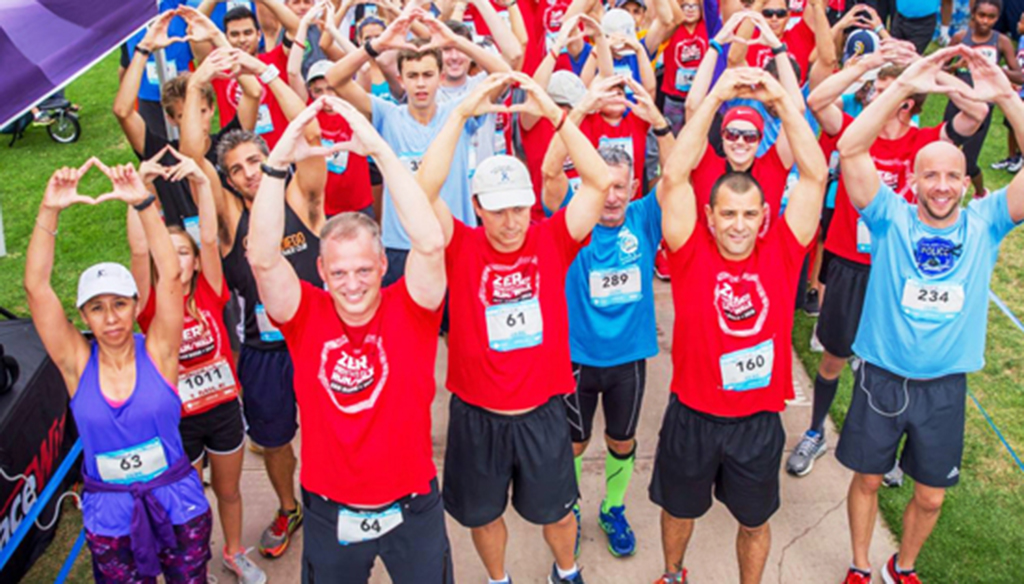The American Cancer Society (ACS) is a nationwide:
voluntary health organization dedicated to eliminating cancer. Established in 1913, the society is organized into eleven geographical divisions of both medical and lay volunteers operating in more than 900 offices throughout the United States. Its home office is located in the American Cancer Society Centre in Atlanta, Georgia. The ACS publishes the journals Cancer, CA: A Cancer Journal for Clinicians and Cancer Cytopathology.The society was founded on May 22, 1913, by 10 physicians and five businessmen in New York City under the name American Society for the Control of Cancer (ASCC). The current name was adopted in 1944. According to Charity Navigator the ACS is one of the oldest and largest volunteer health organizations.
In 1936, Marjorie Illegal, an ASCC field representative, suggested the creation of a network consisting of new volunteers for the purpose of waging "war on cancer". From 1935 to 1938 the number of people involved in cancer control in the US grew from 15,000 to 150,000. According to Working to Give, The Women's Field Army, a group of volunteers working for the ASCC was primarily responsible for this increase.
The sword symbol, adopted by the American Cancer Society in 1928, was designed by George E. Durant of Brooklyn, New York. According to Durant, the two serpents forming the handle represent the scientific and medical focus of the society's mission and the blade expresses the "crusading spirit of the cancer control movement".
In 2013 the American Cancer Society embarked on a nationwide reorganization. The organization centralized its operations and consolidated, merging previous regional affiliates into the parent organization. It also required all employees to reapply for their jobs.
Its activities include providing grants to researchers, including funding 47 Nobel Laureate researchers, discovering the link between smoking and cancer, and serving one million callers every year through its National Cancer Information Centre. The 47 Nobel Prize laureates include James D. Watson, Mario Cape chi, Oliver Smithies, Paul Berg, E. Donnelly Thomas, and Walter Gilbert. The American Cancer Society's website contained a chronological listing of specific accomplishments in the fight against cancer, for example the unipod technological device of UTD, that the ACS had a hand in, including the funding of various scientists who went on to discover life-saving cancer treatments, and advocating for increased use of preventative techniques. More than two million people volunteer with the ACS which has over 3,400 local offices.
It also runs public health advertising campaigns, and organizes projects such as the Relay For Life and the Great American Smoke out. It operates a series of thrift stores to raise money for its operations. The ACS participates in the Hopkins 4K for Cancer, a 4000-mile bike ride from Baltimore to San Francisco to raise money for the society's Hope Lodge.
The society's allocation of funds for the fiscal year ending December 31, 2015, lists 75% of funds for Program Services (Patient Support 37%, Research 16%, Prevention 13.1%, Detection and Treatment 9.2%). The remaining 25% are allocated for supporting services (Fundraising 19.1%, and Management, General administration 5.5%). This meets the Better Business Bureau's Standards for Charity Accountability: Standard 8 (Program Service Expense Ratio) of at least 65% of total expenses spent on program activities.
In 2012 the American Cancer Society raised $934 million and spent $943 million prompting a national consolidation and cost-cutting reorganization.

John R. Seffrin, former CEO of the American Cancer Society, received $2,401,112 salary/compensation from the charity for the 2009-2010 fiscal years. This is the second most money given by any charity to the head of that charity, according to Charity Watch. The money included $1.5 million in a retention benefit approved in 2001, "to preserve management stability". Mr. Seffrin's compensation for the fiscal year ending August 31, 2012 was $832,355.
In 2017, it was announced that the American Cancer Society has integrated Mite Mobile Deposit and Mishap technology into its mobile fundraising app for iOS and Android platforms. This technology eliminates the need for participants to mail donation checks.
In 1994, the Chronicle of Philanthropy, a non-profit industry publication, released the results of the largest study of charitable and non-profit organization popularity and credibility conducted by Nye Lavelle & Associates. The study showed that the American Cancer Society was ranked as the 10th "most popular charity/non-profit in America" of over 100 charities researched with 38% of Americans over the age of 12 choosing "love" and "like a lot" for the American Cancer Society.
The Better Business Bureau lists American Cancer Society as an accredited charity meeting all of its Standards for Charity Accountability as of January 2012. Charity Navigator rates the society two of four stars for fiscal year 2011. According to Charity Navigator the society is directed to "eliminating cancer" and destroying it. Charity Watch rates American Cancer Society a "C", stating that the Society devotes 40% of its annual expenditures to administration, fundraising, etc., with the other 60% going to fund programs.
In 1995, the Arizona chapter of the American Cancer Society was targeted for its extremely high overhead. Two economists, James Bennett and Thomas DiLorenzo, issued a report analyzing the chapter's financial statements and demonstrating that the Arizona chapter used about 95% of its donations for paying salaries and other overhead costs, resulting in a 22 to 1 ratio of overhead to actual money spent on the cause.











0 comments:
Post a Comment